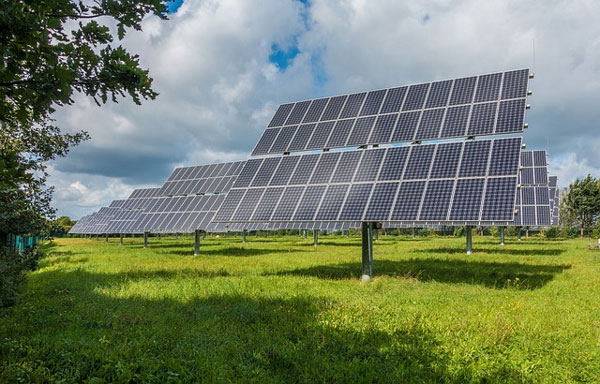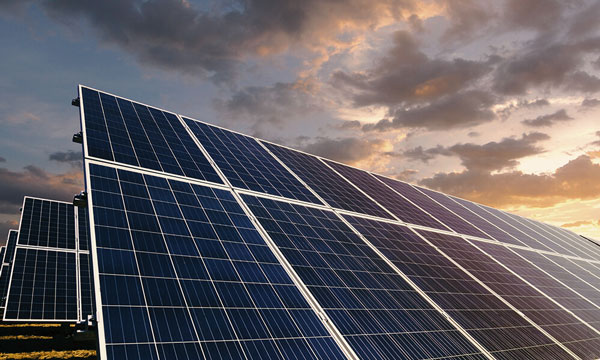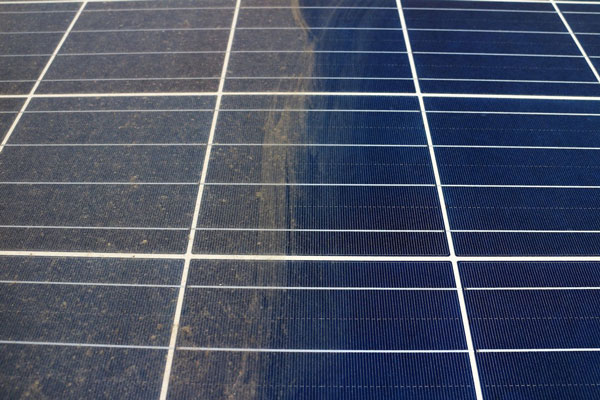Solar energy reduces utility bills by lowering energy consumption, offering net metering benefits, providing tax credits and incentives, improving overall energy efficiency, and locking in energy costs to protect against price hikes.
Reduce Energy Consumption
Solar panels help in reducing exorbitant household energy costs by using the sun's power to create electricity, which ultimately reduces your energy bill. In most casesr the systems generate from 20% to as much as 60% of a household's electricity bill depending on your system size and typical energy use.
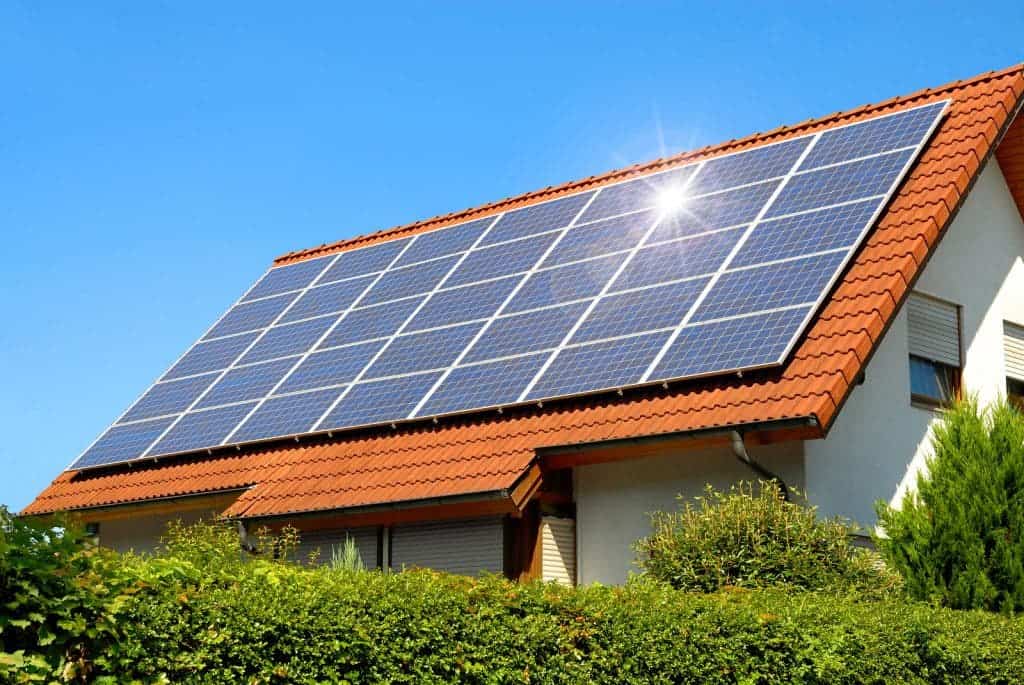
Maximizing Solar Input
The alignment of solar panels plays the critical role in minimizing energy usage. The north-south orientation, and tilt of your panels are important; in the northern hemisphere you should try to have them face south at an angle that matches your location's latitude. This is to ensure that you get the best sunlight throughout the year. This tilt is more effective in the winter, when the sun rides lower across the sky and improve exposure though-out longer days.
Using High-Efficiency Panels
Solar panels operate at high efficiency. Current photovoltaic (PV) panels usually have efficiency that varies from 15% to around 22%. In the larger context, panels at the high end of this efficiency range produce more power from a given amount if sunlight so are particularly suited to locations where roof space is restricted or have lower levels exposure. A regular panel, for example would convert just 15% of solar radiation into electrical power while a high-efficiency model could capture as much as 22%! This increased effectiveness is what enables you to get more power output without having any extra panels taking up space.
Home Energy Production Coproduction with Solar
Although solar panels can be used together with smart home energy management systems for even greater savings. These systems manage how energy is used and when it is consumed in your home to ensure that the electricity form a solar power system can be supplied first, before using grid certified electricity. For instance, they can automatically turn on and off heating/cooling or running appliances when solar energy is plentiful due to time of day. This would enable a further 10% cut in energy use due to reduced wastage and an overall more efficient home.
Monitoring and Maintenance
PV panels with the most common lifespan of 25 to 30 years need continuous monitoring and maintenance for proper working. This includes tracking that can be monitored via a web interface or smartphone for most systems. The technology also monitors the power plant 24/7 and can help identify legitimate issues that degrade performance, such as shading from trees or dirt/mud on panels, which reduce output. Keeping these areas clean and inspecting them can prevent the solar array form losing efficiency, which in turn will provide homeowners with continual energy cost savings.
Net Metering Benefits
Another benefit of having a solar power system installed is net metering, which lets you receive credit on your utility bill each time the excess electricity produced by your home's solar panels gets sent back to the grid. This can replace the power consumed at night or during cloudier days, which constitutes a more significant part of energy cost.
Understanding Net Metering
In theory, net metering is simple - if your solar panes generate more power than you use at home then the same amount of energy gets exported to the utility grid. During these times, your electric meter will essentially run backwards, creating a credit against the electricity you draw from the grid (like at night) if your solar system can't generate enough to cover all of what you're using. In many places you get a one-to-one (kWh for kWh) credit with them; whatever electricity unit you send back to the grid that is how much of your bill/utility charges are offset.
Calculating Your Savings
Net metering savings require monitoring how much energy is being produced by your solar system vs how much it is using in the house. For example:
- Excess Solar Production and Consumption: If it is a sunny day your solar panels generate 30 kWh but you only use 20, than the remaining 10 are sent back to the grid. In this you obtain 10 kWh credits.
- Credit Use:If it was overcast one day and you only produced 15 kWh but your house used up to the moon, or conversely20 kWh offree energyand no other producer storedmuch for such an event.
- Calculation of Net Metering: The utility will calculate at the end of each month, how much electricity supplied by them you used and exported some to grid. If you exported more, you could get paid a little or credit for less in your next invoice.
Eligibility and Enrollment
Net metering typically involves a homeowner applying to their utility company, and an inspection may be required for the solar installation by the utility in order to ensure that it is up to safety and performance standards. Net metered systems are subject to individual state laws and regulations, so the availability of net metering from one utility will not be available through every other electric provider in a given region. Some states do require utilities offer "net-metering," but most of these only have mandatory programs for investor-owned-utilities (and not all IOUs) rather than public power providers so it also could vary by your specific city or municipality rules - environmental groups like Vote Solar stay up-to-date with changes; some takeovers within this quarter alone pass mandates requires restoring favorite rebates after previous owners scaled back approach though limiting balance buffer sets ceiling gives attention where properties change hands over overtime periods thereby under cover what areas need bases adjustments involving ownership changed even returns any time soon!
Utility Bill Impact Breakdown
Actual monthly net metering impact on bills: By looking at real data with the tenant, we can determine what actual renters will experience each month in terms of a bill before solar and after (without compensating for incentives or hedging). In an example, a standard household may use 900 kWh per month and produce 1,000 kwh with home solar. Under net metering, the family would not only avert paying an electricity bill for that month altogether but also rack up 100 kWh in credit to offset future bills.
Tax Credits And Incentives
These tax credits and incentives are essential for lowering the upfront as well long term costs incurred with installing, running an maintaining a solar energy systems. These financial benefits can profoundly improve the economics of solar investments by accelerating how quickly they pay for themselves and boosting their overall returns.
Federal Solar Investment Tax Credit (ITC)
The federal stimulus that continues to boost solar power incentives across the board remains the Federal Solar Investment Tax Credit, also know as ITC for short. Homeowners can take 26% of their solar energy system installation costs right off the top and apply that to what they owe in federal taxes. The tax credit extends to residential and commercial use, without a maximum value. So, for example, let us say you invest $10K in your solar system and you will be knocking-off another %2.6K from what owe Uncle Sam.
State and Local Incentives
A number of states, municipalities and utilities also provide additional incentives that can be used in conjunction with the ITC. These can include:
- PA DEP: Part of The Pennsylvania Department Of Environmental Protection, this program offers upfront cash rebates to qualifying customers incentivized by the state.
- State Tax Credits - These are akin to the federal ITC, and they represent credits against state tax liabilities.
- Property Tax Exemptions - Many localities do not include the added value of a solar system when assessing property taxes.
Solar Renewable Energy Credits or SRECs
Some states allow you to earn Solar Renewable Energy Credits (SRECs) for power your system generates. Finally, those credits can be sold back to utilities on a market the them fulfil their own renewable energy requirements. The value of SRECs can be a large part, and in some cases the majority, of what it costs to own a solar system. In New Jersey and Massachusetts for example, SRECs sell high enough to produce hundreds or even thousands of dollars per year.
Performance-Based Incentive (PBI)
Performance Based - Some states have performance based incentives and they will actually pay you for the electricity that your solar system produces (rather than just net metering). The incentives are paid based on the amount of solar electricity generated, and often they are guaranteed for a certain number of years after your system is installed. BankabilityPBIs help secure a reliable revenue stream that improves the economic viability of solar projects.
Pay-Along with Net Billing, and Feed-In-Tariffs
Net billing or feed-in tariffs are also available in some regions, where the energy generated by one's solar is not just simply offsetting current electricity rates but sold at a premium to the local utility. This setup means that solar energy producers can rely on a stable an attractive ROI of CCE.
Improve Energy Efficiency
Solar is also the enabling technology that can unlock all of your energy improvements which increases your financial savings and reduces your environmental impact by needing less total power peaking to support solar together.Smart Home Energy Systems
Innovative energy systems can also use smart home technology to integrate solar panels for better efficiency. These systems streamline how your home consumes power, at the same time vindicating how it does so. For example, Smart thermostats that are responsive to solar production trends and current weather. Integration of smart technology at home can help homeowners reduce up to 25% in energy usage.Switching to Energy Efficient Appliances
Not only does replacing old, inefficient appliances with new energy-efficient models mean they use less energy to do the basics of daily living,... Appliances that are Energy Star rated can consume 10% to 50% less energy than the average equivalent -- and even more so if they work with a power-management system like Eve Energy. One such example is an Energy Star refrigerator, which uses at least 15 percent less energy than non-qualified models - and up to 40 percent less energy if the model was built before 2001.improving insulation and sealing
In addition to sealing leaks in doors and windows, better insulation means less conditioned air leaking out of the home —and lower heating & cooling demands. Insulating your buildings properly can save up to 15% on heating and cooling costs, and as much as 11 percent of total energy expenses. So, it is not only for saving energy but also ensuring that the solar power produced would be consumed in such an efficient manner.LED Lighting
Going with LED lighting is another great way to improve water efficiency. LED lights can save at least 75% on energy and last around 25 times longer than incandescent lighting. By spreading LED lights out throughout a home, the cost of electricity can be saved and reduce overall load on energy in your solar systems so it has ability to cover more portions for up till your daily needs.Energy Monitoring and Management
Energy monitoring tools give a good insight to energy consumption patterns and high using areas that could be optimized. By monitoring the consumption using these systems you can identify which appliances are causing excess wastage and costing to increase. Homeowners can shave yet another 10-20% off their electrical consumption by monitoring and managing energy use, further boosting the reach of solar systems.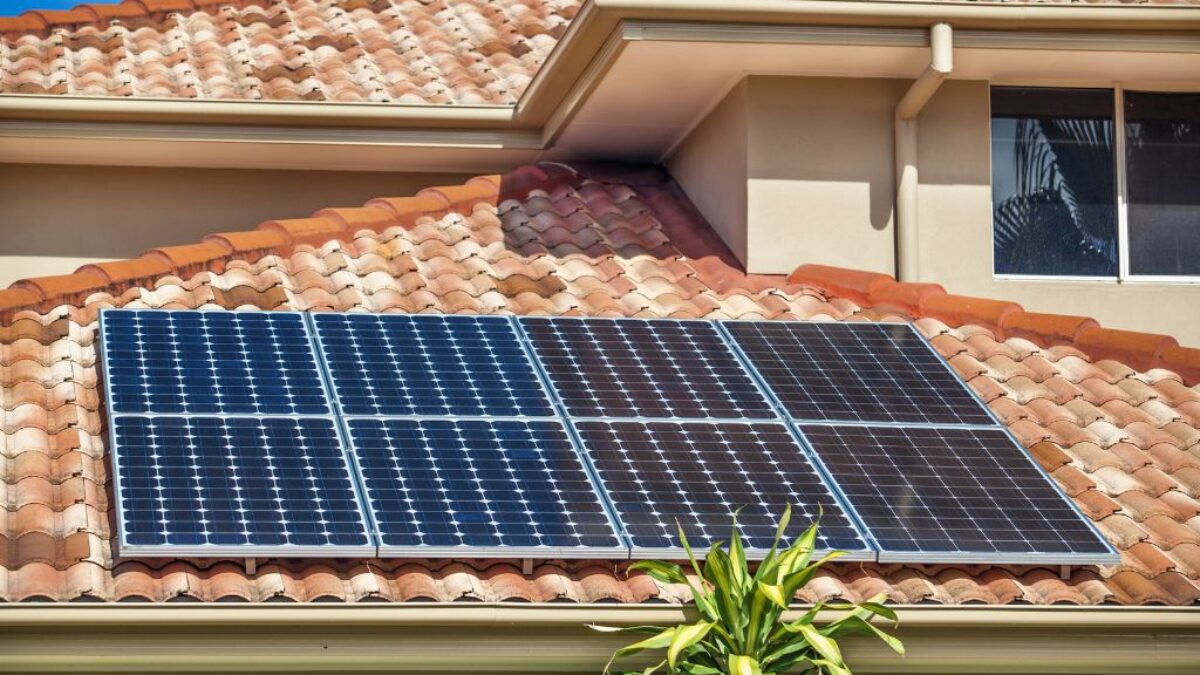
Lock In Energy Costs
Strategic insurance against fluctuating utility pricesSolar panels lock in energy costs, which helps stabilize household energy costs. This is most attractive in markets experiencing volatile or consistently increasing price of electricity.
Stable Energy Production
Depending on weather conditions and time of year, solar panels produce an expected amount of electricity per day. Homeowners can meet much of their daily power requirement by installing a solar system that is large enough. The average residential solar system produces around 840 kWh of power per month, enough to cover closer from about half (50%) up to practically all its electricity needs depending on location and usage patterns.
Sheltered From Future Energy Price Hikes
Nationwide, utility rates climbed by an average of 2. This is where it helps to have your own solar energy because the cost of producing that electricity will not go up. It is also a hedge against future price hikes, as the energy that solar power produces costs what it costs to generate for at least the next 25 or more years (the typical lifespan of most solar panels).
Solar Leasing & Power Purchase Agreements
Also available those who do not wish to purchase them outright would be solar leasing or Power Purchase Agreements (PPAs) so. These deals let homeowners either lease solar systems, or sign power-purchase agreements to buy the energy their PV panels gobble up every day at a fixed rate per kWh; that priced is intended be lower than what they would pay for utility-generated grid electricity. Savings and Price Predictability] The rate is typically set from ten to twenty-five years hence, saving money long-term.
Government and Utility Solar Rebates
Additional financial incentives for solar power are offered by certain government and utility programs, which can also solidify the cost of energy. For instance, some states offer up grants or additional rebates to decrease the cost of installation at face value and reduce that break-even point which is how long it will take for your economic profile balance out on you solar investment.
Finance and Solar Investment Solution
Solar power helps immediately reduce monthly utility bills, while providing long-term financial planning. Homeowners have a much clearer picture of what their energy costs are going to be for the next ten years, so budgeting becomes simple and predictable. Retirees or whoever is living on a fixed income, it has the most considerable benefit of sound financial predictability.

